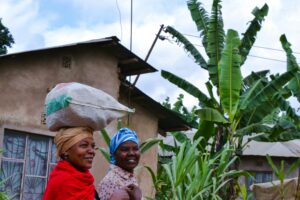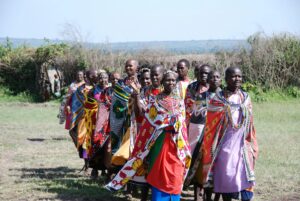In Africa, Community Based Tourism holds great potential for empowering local communities and promoting sustainable development.

According to forwardkeys Africa and the Middle East (MEA) have experienced a solid growth in international arrivals in 2024.
In the first half of 2024, the number of seats on flights arriving in the sub-region increased by +10% compared to the same period in 2023.
Community-Based Tourism Success Stories in Africa
Africa offers a great opportunity to engage directly with diverse cultures through community-based tourism (CBT).

Examples illustrate how community involvement in geosite-centred tourism can drive sustainable development and conservation efforts across Africa.
South Africa: In South Africa, Table Mountain, a prominent geosite, forms an integral part of the UNESCO World Heritage site encompassing Table Mountain National Park. The success of this geopark is underscored by the active engagement of local communities in various facets of tourism.
Residents play a pivotal role in leading guided tours, offering visitors authentic insights into the geological and cultural significance of Table Mountain.
Tanzania: Similarly, the Ngorongoro Conservation Area showcases the potential of community involvement in geosite-centred tourism. Local Maasai communities actively participate in tourism activities, including guiding tours and cultural performances, with revenue supporting community projects, education, and healthcare.

Mount Kilimanjaro in Tanzania relies on local guides and porters for trekking expeditions, with tourism providing significant employment opportunities and funding community projects.
Namibia: In Namibia’s Damaraland, the local Damara people manage community-based conservancies and eco-tourism lodges, with tourism income supporting community infrastructure and education.
Tourism has boomed in Namibia in recent years, making well-known attractions, such as Sossusvlei, very popular.
However, travel company Sable Tours, which specialises in travel to Namibia, knows some special places.
Malawi: in 2015, UNESCO gave a workshop in Cape Maclear on sustainable world heritage tourism. The workshop inspired participants to set up the Cape Maclear Community Tourism (C.M.C.T.). The project exists for the local community. Few people of the community are involved in tourism in Cape Maclear. This project is there so that this can change; that local residents can benefit more from tourism.

Since January 2017 it is possible to book a homestay in Cape Maclear. First you will meet your host family, they will guide you around the village, where the market is. You are encouraged to attend real daily life. This can be done through different things; cooking food together, doing dishes or sowing through the fields.
How do African tribes contribute to CBT?
There are over 3,000 different African tribe names.
Some of the most important of these tribes are:
- Zulu, South Africa.
- The Karo, Ethiopia.
- The Himba, Namibia.
- The Dogon, Mali.
- The Yoruba, Nigeria.
- The Masai, Kenya and Tanzania.
- The Taureg of the Sahara.
- The Wodaabe, Niger and Chad.
In sustainable tourism, tribes and local communities actively participate in the design, ownership, and management of tourism projects. This means that the income from tourism goes directly to them, not to foreign companies.

For Example, Maasai Mara in Kenya, where Maasai communities manage some lodges and tours or, local guides from the San tribe in Botswana teach tourists animal tracking and survival techniques in the wild.
African tribes have a wealth of knowledge about nature, wildlife, and sustainable land management. When tourism is done in a sustainable manner, this indigenous knowledge helps to protect the environment and manage resources.
